The Strange Reason Why the Air Force Landed a Reaper Drone on a Wyoming Highway
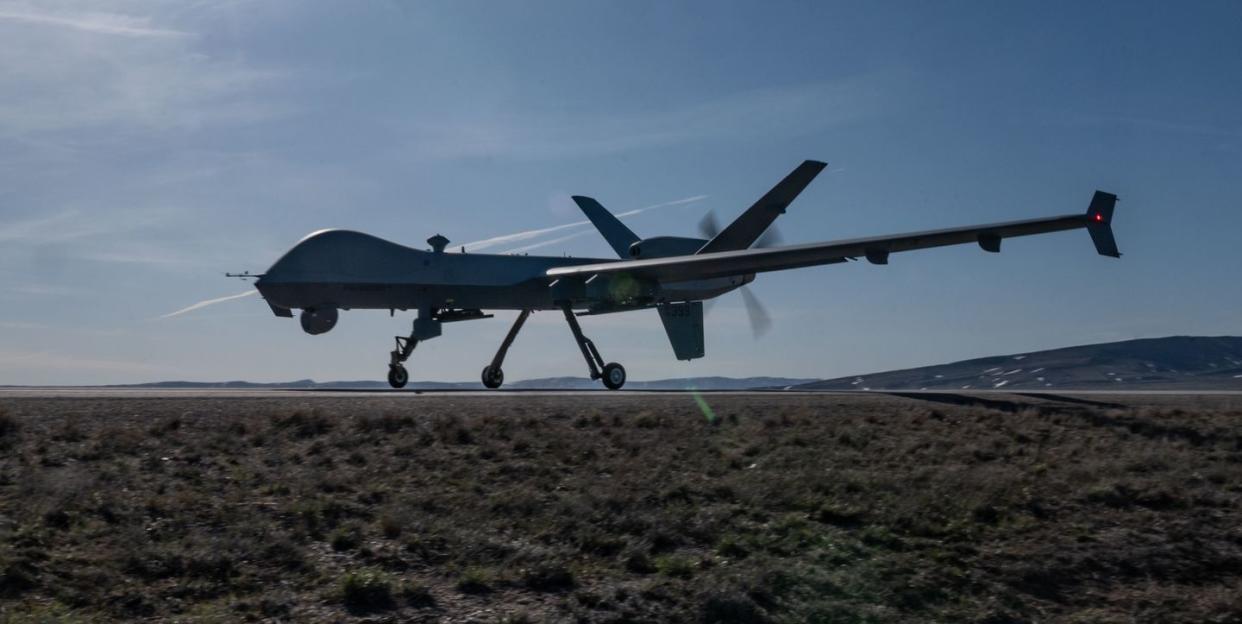
Late last month, one of the Air Force’s big MQ-9 Reaper drones—an ominous fixture of U.S. drone strike campaigns—turned its sophisticated MTS-B electrooptical sensors on a novel target over a barren plain in Wyoming: U.S. Route 287, a highway running across the United States.
This challenge wasn’t to spy on suspicious activity or pulverize a hapless High-Value Target with Hellfire missiles—not even an imagined one—but simply to land. On Route 287.
The Air Force had done prior homework on this problem. The service tested patching in landing parameters to the Reaper’s automatic takeoff and landing system (ATLC) using optical sensors for an unprepared airfield in New Mexico, and tested a targeting pod in 2021. Perhaps those methods generated parameters for MQ-9’s landing system over Highway 287 too. Still, an unprepared airbase is not the same as a highway.
Nonetheless, Air Force media shows the MQ-9 successfully landed. It was met by an advance Air Force special ops team from the 123rd Special Tactics Squadron, which had prepared a Forward Arming and Refueling Point (FARP) to receive the thirsty, crewless bird. Upon refueling, the drone took off and eventually returned to base.
Also along for the ride on this highway takeoff-and-landing derby were a pair of tough-as-nails A-10 ground attack jets and an MC-130J Commando II special operations transport, which deployed the fuel and equipment used to refuel the tank-busting ‘Warthogs’.
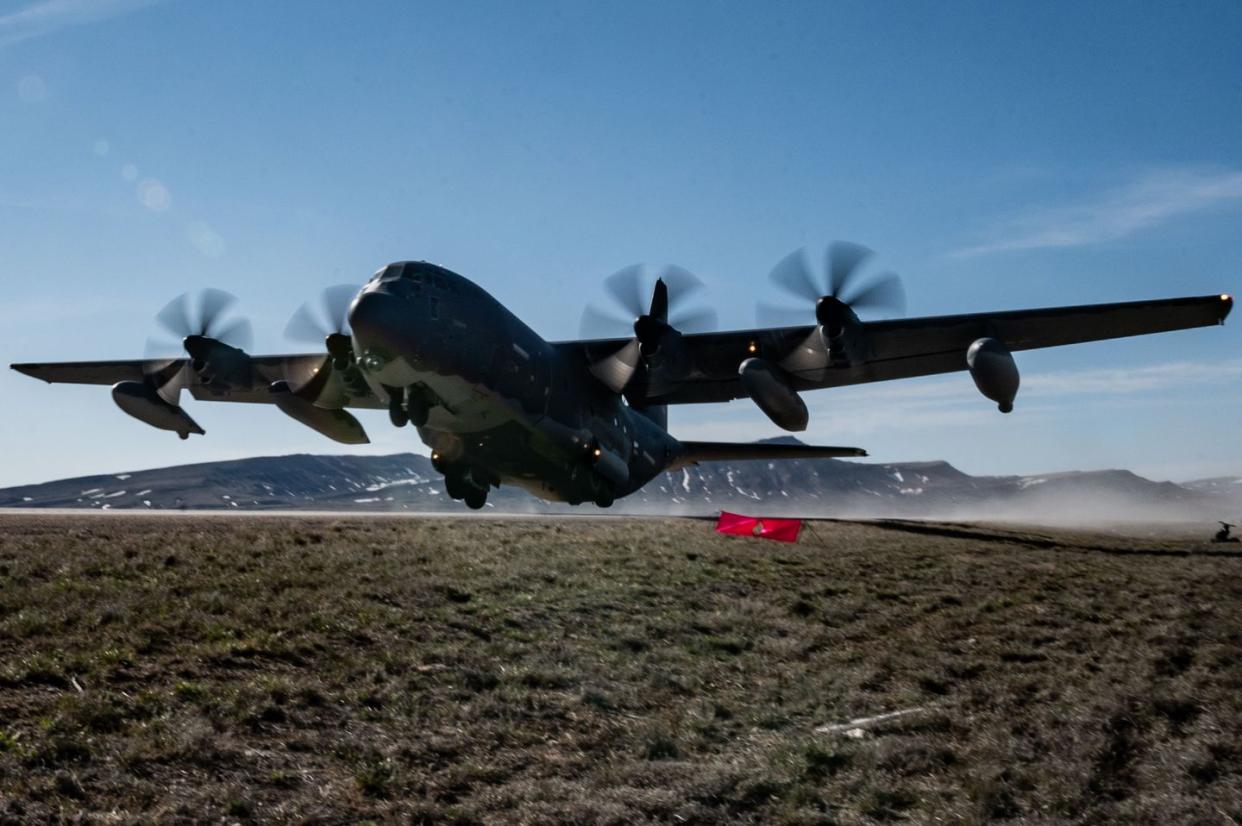
Then, on May 2, a similar exercise was carried out on Wyoming’s Highway 789. It involved an MC-130J setting up a FARP for two tiny, egg-shaped MQ-6M Little Bird armed scout helicopters, which practiced dropping off and picking up Air Force Special Ops personnel.
But the standout of the drill remained the Reaper drone which—unlike the other platforms—had never before performed a highway takeoff and landing, and has long been considered dependent on permanent airbase infrastructure.
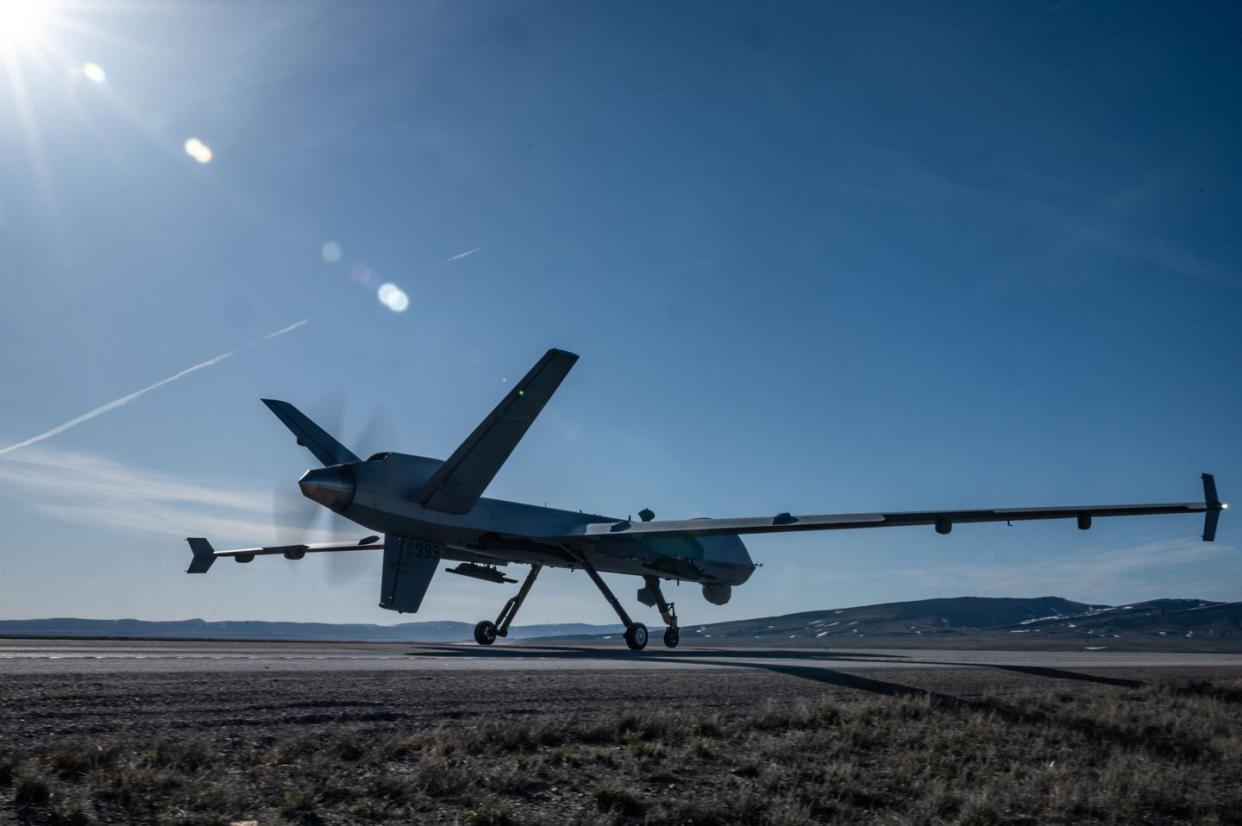
The exercise in Wyoming wasn’t about fighting a hypothetical insurgency of motorcycle raiders, but rather, a new warfighting strategy aimed at mitigating losses to China’s military in the Pacific Ocean. And it’s also, ironically, a shot at giving the Reaper a new lease on life.
Agile Combat Employment: All About Surviving China’s Land-Attack Missiles
At present, U.S. defense strategy is focused on potential conflict with China, which is most likely to occur in the event of an attempted invasion of Taiwan. But U.S. air power, which is arguably the Pentagon’s greatest strength, faces a big problem. Its many short-range fighters—ranging from F-16s, to carrier-based FA-18E/Fs and F-35 and F-22s stealth jets—can only rely on a handful of bases in the western Pacific Ocean that are well within range of China’s over one thousand short- and medium-range ballistic missiles.
Air defenses would whittle down the incoming salvoes, but too many would likely get through. And while aerial refueling can allow fighters to transit to the battlespace from distant bases, the logistical effort shepherding fighters on round trips across thousands of miles of Pacific Ocean drastically reduces sortie generation rates. Aircraft carriers carrying short-range fighters also can’t risk wading too close to the fray due to China’s deep inventory of submarines and anti-ship cruise and ballistic missiles.
A recent series of simulations of a defensive war over Taiwan organized by the CSIS think tank saw the U.S. and Japan losing over 400 combat aircraft in two weeks, almost all while on the ground in Japan or on carrier decks. While long-range bombers based further away ended up pulling more than their weight, they couldn’t much help achieving air superiority.
The Pentagon’s new doctrine to address this problem is called Agile Combat Employment (ACE). It takes a page from methods other air forces have practiced for decades to guard against being wiped out on the ground by a powerful neighbor’s first strike. In this method, combat aircraft are rapidly dispersed across a network of smaller secondary bases to avoid presenting a convenient target—including using highways as makeshift airstrips.
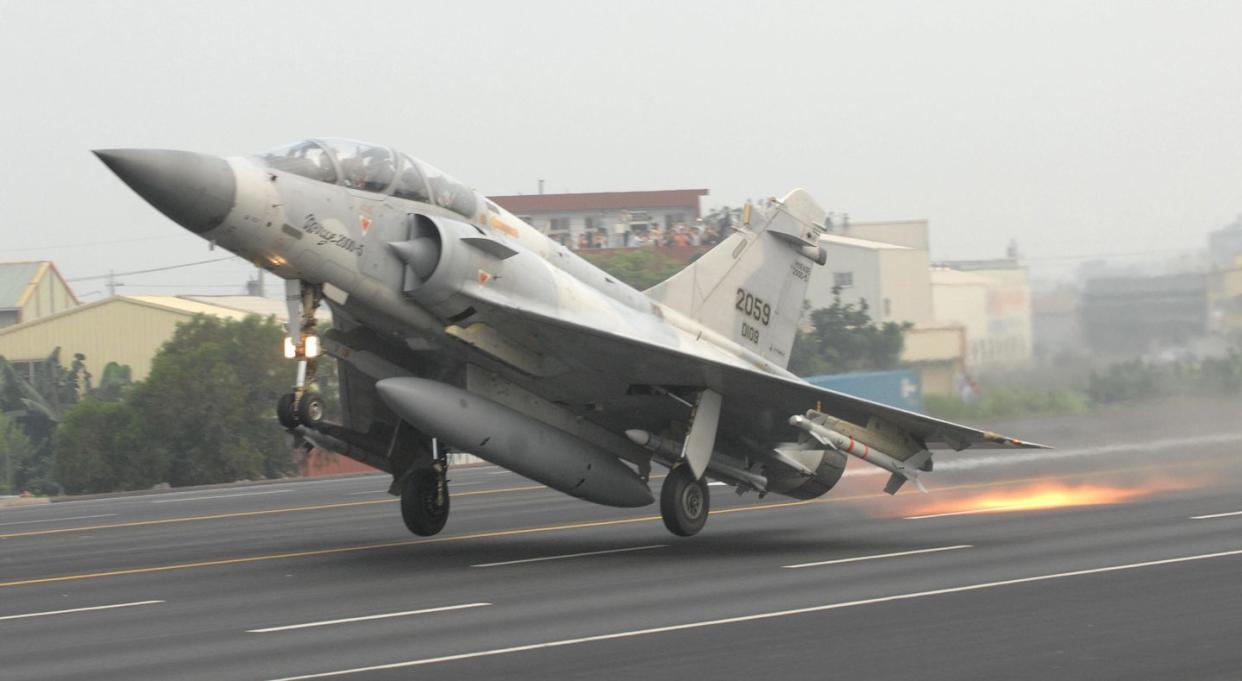
Indeed, Ukraine’s Air Force at the onset of Russia’s invasion in February of 2022 managed to save all but a handful of its Soviet-built warplanes from the opening barrage of Russian missile and airstrikes through rapid dispersal.
ACE is therefore the U.S.’s wartime dispersal strategy. And highways are especially appealing because there’s so many of them to go around they can’t all be cratered.
The challenge of ACE ops goes beyond training pilots to takeoff and land from these austere improvised bases, and includes quickly setting up the ground supports structures necessary to refuel, rearm and at least minimally service combat aircraft without the deep logistics a large, fixed airbase offers. That means helicopters or transport planes, like the MC-130 in Agile Chariot, need to be able to rapidly deploy necessary equipment and personnel to the improvised bases before the warplanes arrive.
Other sound strategies include spreading out combat aircraft across civilian airports to render missile attacks less efficient—a move would effectively require permission from the Japanese government—or greatly expanding construction of hardened aircraft shelters (HASs) at forward bases, which would shield individual aircraft from most munitions landing anywhere short of a direct hit. However, such an expensive concrete-pouring operation lacks the political allure of procuring shiny new weapons.

A New Chapter for the Reaper?
The Reaper’s role in the Agile Chariot ACE exercise is particularly interesting, as the craft has a huge target painted on it's metaphorical back. It was put there by Pentagon brass, who in 2020 cut procurement at 337 aircraft, despite continuing high demand for use of these drones in surveillance flights over the Middle East and Africa.
The MQ-9 Reaper was built to circle for hours over areas of interest on surveillance missions, and for use in locating and killing insurgents who attack using precision weapons released from such high altitudes that their targets usually have no way of shooting back. On top of that, the Reaper was meant to do all of this over longer distances while carrying more weapons and sensors than the preceding smaller, piston-engine MQ-1 Predator combat drone.
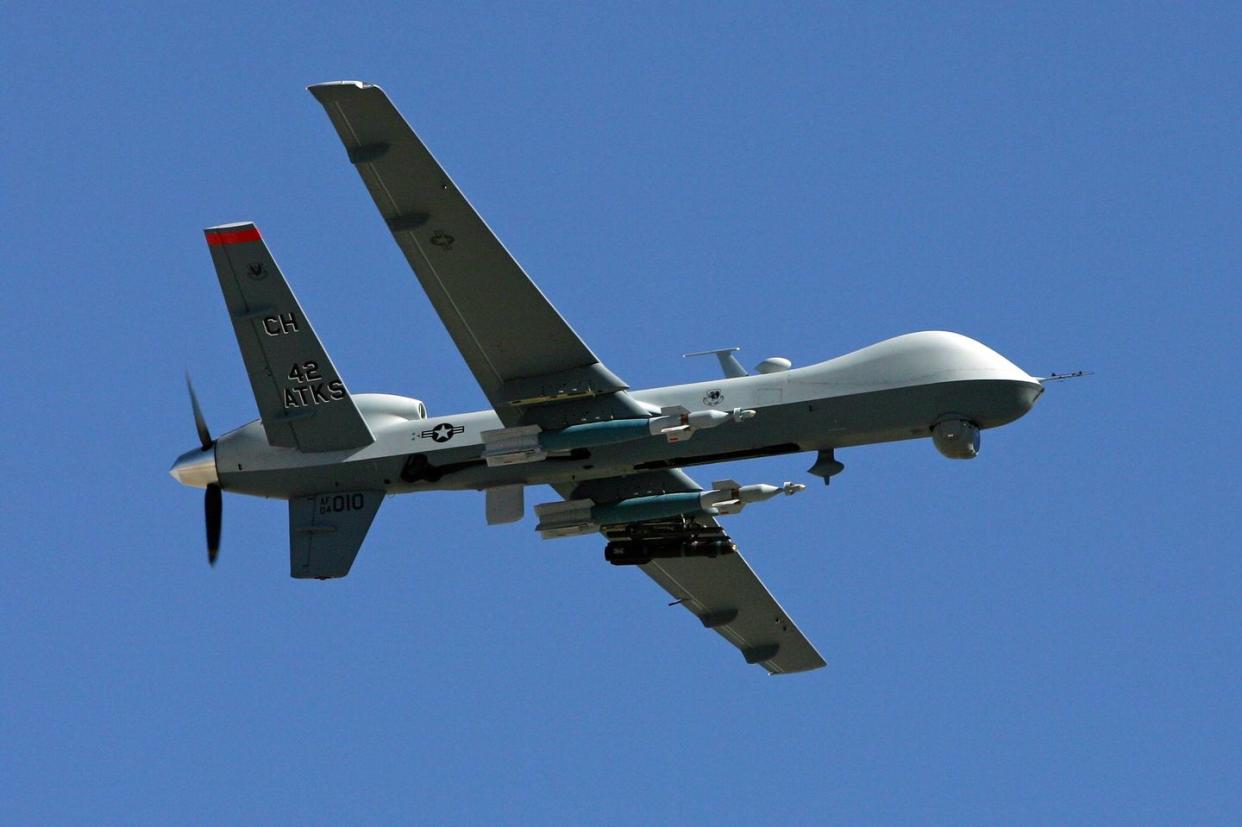
Though hardly cheap at $35 million for two aircraft and a ground control station, Reapers still cost way less per flight hour and airframe than beefier manned warplanes, and can be piloted from across the globe by pilots in the United States via satellite communications links.
Since entering service in 2007, MQ-9s have performed thousands of strikes, and have become the combat drone capability of the air forces of France, Italy, Spain, the Netherlands, and United Kingdom.
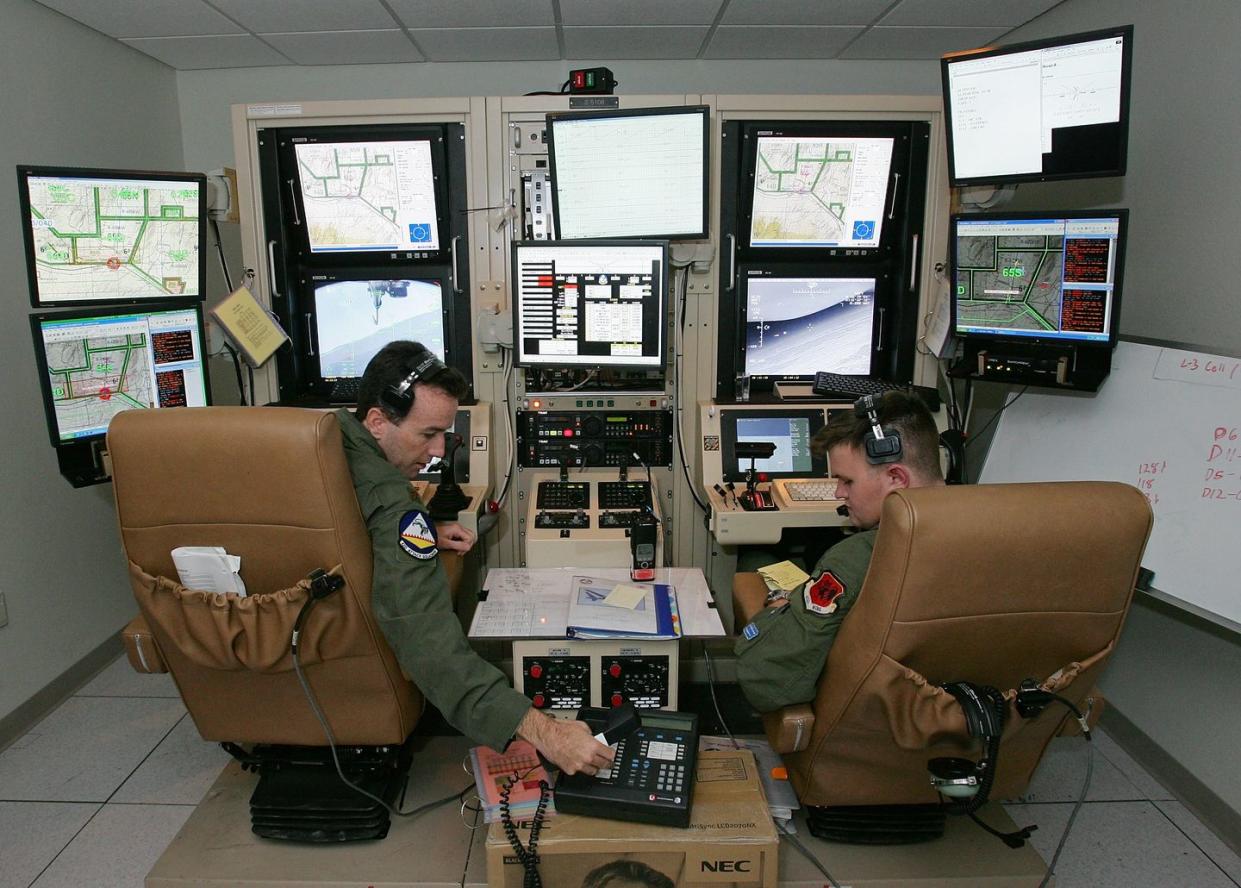
But being neither fast nor stealthy, Reapers would be sitting ducks in a war with capable adversaries like Russia or China, with numerous fighter planes and high-altitude surface-to-air missiles. The recent destruction by collision of an MQ-9 intercepted by Russian fighters in international airspace over the Black Sea highlights that vulnerability.
Now that the Pentagon is prepping more intensely to potentially fight China or Russia—and, less so, regional insurgents—it’s less interested in maintaining the Reapers. It would rather buy new drones that are either cheaper and more expendable, or purchase stealthy alternatives likely to remain effective within a powerful adversary’s air defense zone.
By showing that the MQ-9 is compatible with ACE operations, the special operations community is making the case it still can be slotted into the Pentagon’s new airpower strategy. It should also interest Taiwan, which is procuring its first four MQ-9Bs. Though likely procured with peacetime maritime surveillance in mind, Taiwan’s military will nonetheless want ideas on ways to keep the Reapers in one piece should China invade.
In the horrible event of a shooting war with Russia or China, U.S. MQ-9s might remain useful in areas where there is a lower density of hostiles fighters and air defenses. That could involve maritime surveillance of operational flanks, as well as target acquisition, strike, and close air support missions in ‘permissive’ airspace where opposing high-altitude anti-air capabilities are absent, or only sporadically present.
Such scenarios aren’t inconceivable. Ukraine demonstrated last year in the Battle of Snake Island that high-flying missile-armed drones can be relentlessly effective picking apart isolated island garrisons lacking long-range air defenses. And if MQ-9s can at least temporarily operate from improvised runways on the U.S.’s own remote island bases—as Agile Chariot suggests—they could provide valuable support for forces based there, including target acquisition for island-based anti-ship missile batteries of Marine Littoral Regiments.
Time will tell whether exercises like Agile Chariot convince the Pentagon to stave off Reaper retirement just a bit longer.
You Might Also Like
